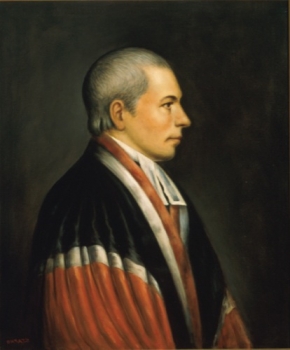You are here
Circuit Court Opinions:
Associate Justice William Paterson, Vanhorne v. Dorrance (1795)

Vanhorne v. Dorrance, 28 F. Cas. 1012 (C.C.D. Pa. 1795) (No. 16,857) [Middle Circuit]
Vanhorne arose from a land dispute between Pennsylvania and Connecticut. In 1782, a court of commissioners appointed under the Articles of Confederation determined the land in question to be in Pennsylvania. There were conflicting claims of ownership, however, by Connecticut settlers who had resided on and improved the land and Pennsylvanians who claimed title derived from the original proprietors of the colony. Recognizing that the conflicting claims had “caused much contention, expense and bloodshed,” the Pennsylvania legislature enacted a statute giving the Connecticut settlers the opportunity to prove their claims and, if they were successful, providing compensation to the Pennsylvania claimants in the form of other land.
A Pennsylvania claimant sued in federal court, and the case came before Justice Paterson. Paterson ruled for the plaintiff on the basis that the Pennsylvania statute was unconstitutional and that even if it had been constitutional, the procedure it specified had not been carried out and could not be carried out in the future because the law had since been repealed. Most significantly, the case was one of the earliest in which a federal court considered whether a state law violated the state’s constitution. In a precursor to Marbury v. Madison (1803), Paterson asserted that “every act of the legislature, repugnant to the constitution, is absolutely void.” The Pennsylvania law, he explained, by allowing those with title to the land to be divested of it without proper compensation, contravened the state’s constitution, by which “the preservation of property is made sacred.”
